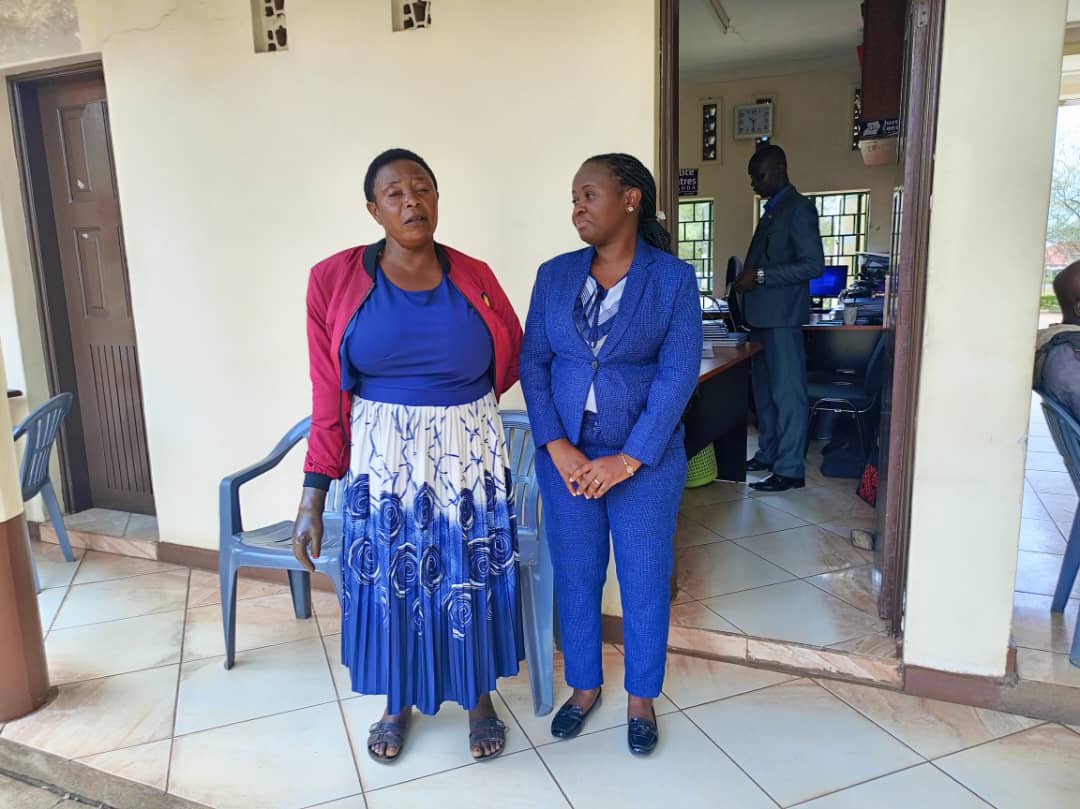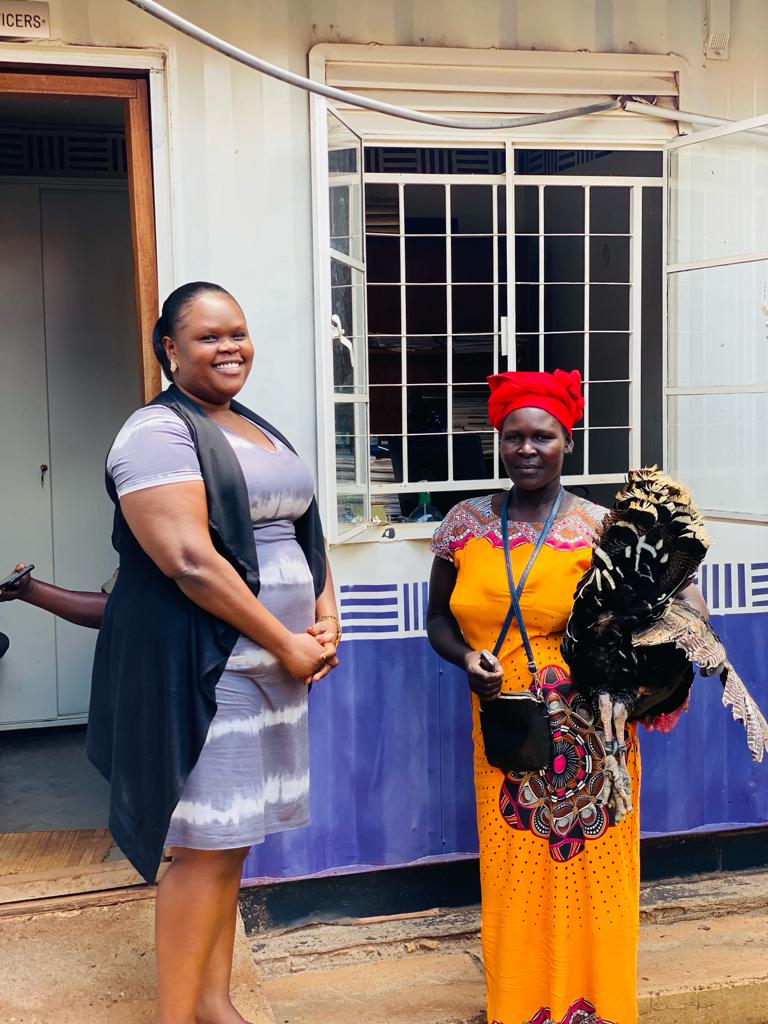Child Labour is illegal!
Child Labour denies children their fundamental human rights such as the right to education, right to rest and leisure and free from unfair working conditions. The Constitution of the Republic of Uganda under Article 34 (4) provides for the protection of children from socio-economic exploitation and restricts them from performing child labour. Child labour is work that is mentally, physically, socially or morally dangerous and harmful to a child, and the circumstances under which it is performed endanger the physical, mental, spiritual, moral, or social development or in the worst forms of child labour.
The minimum age of employment of a child is sixteen (16) years and the minimum age for hazardous work is 18 years .
A child under the age of fourteen (14) years shall not be employed in any business undertaking or workplace, except in the following circumstances; light work carried out under the supervision of an adult and where the work does not exceed fourteen hours per week.
Definition of Child Labour
Child labour manifests itself in various forms and some of these are when children:
- are exposed to dangerous machinery, equipment and tools;
- carry heavy loads beyond their capacity;
- work in unhealthy environments that expose them to hazardous substances, infectious diseases, excessive noise, temperature or vibrations;
- are exposed to harassment or physical, psychological or sexual abuse;
- work underground, in water, or at heights;
- are unreasonably confined to the premises of the employers;
- work for long hours.
Child labour is found in different sectors including domestic service, commercial agriculture (tea and sugar plantations), the informal sector, hotels and bars, construction, fishing, mining, stone and sand quarrying.
Examples for Child Labour
1. Child domestic work (CDW)
Child domestic workers experience different forms of abuse and exploitation. Children who are employed as domestic workers are deprived of an opportunity to go to school or participate in any form of productive skills training.
Some work for more than 14 hours a day. Child domestic workers are involved in cooking for the family, baby-sitting, cleaning houses, taking and picking children from school. Their terms and conditions of service are not clearly defined. Often times, payment is in form of food, shelter and sometimes, old clothes and not money.
There are a number of abuses associated with child domestic work including sexual, physical and verbal abuse, isolation, detachment from friends and families. Child domestic workers are open to abuse because of their age and sex, their confinement, their invisibility to the public and total dependency on the employer.
2. Children in commercial agriculture
Children employed in the agricultural sector work in hazardous and dangerous activities on tea, sugar and coffee plantations, tobacco and rice farms, in fishing and related activities. They face many hazards and risks, which include mixing, handling and applying toxic chemicals, carrying heavy loads, using cutting tools and operating heavy machinery, long hours of work sometimes in extreme temperatures.
3. Children in the Informal Sector
The informal sector comprises small businesses that largely depend on family labour. Children form part of the family labour or work on their own as street hawkers, shop assistants, assistants in garages and carpentry workshops, domestic servants, house cleaners, cooks, waiters and waitresses in restaurants as well as in bars among others.
4. Children in the Construction Sector
In construction, children are used as a source of cheap labour. These children are employed in formal construction enterprises involved in erecting of buildings and infrastructure. The children are involved in brick making, sand and stone quarrying.
5. Worst forms of child labour:
In its extreme forms, child labour is accompanied by the use of dangerous tools, long hours of work, heavy loads and tasks, exposure to chemicals and dangerous substances, cruelty by employers, sexual abuse and exploitation.
In its worst forms, children are engaged in; forced recruitment for use in armed conflict, illegal cross border trade and child trafficking, child slavery or bonded labour, commercial sexual exploitation (used as strippers, for sex work & pornography), used as street beggars, commercial fishing, charcoal burning, and other illicit activities etc.
When any of the above mentioned characteristics are observed where children are working, child labour takes the form of hazardous work that requires elimination as a matter of urgency. Such child labour is deemed to constitute the ‘worst forms of child labour’.
Where to report instances of Child Labour
- The Police (Child and Family Protection Unit)
- The Local Council
- The District Labour Officer
- Courts of law including Industrial Court
- Justice Centres Uganda
- SAUTI 116 (Child Helpline)
Punishment for child labour offences
- A person who witnesses an abuse against the rights of a child shall, as soon as possible, report the matter to the police or any authority responsible for child welfare. Failure to do so, a person commits an offence and is liable on conviction to a fine not exceeding UGX. 400,000 (twenty currency points) or imprisonment not exceeding one year or both.
- The Penal Code (Amendment Act) 2007 Prohibits sexual abuse against children and criminalizes abduction, child trafficking and sexual exploitation of children, child stealing; and commercial sexual exploitation. Conviction against any of these cases carries a maximum sentence of seven years.
- Under the Prevention of Trafficking in Persons Act, No. 6, 2009, a person commits the offence of aggravated trafficking where the victim of trafficking is a child.
NOTE: A person who while having reason to believe that a person is a victim of trafficking engages the labour or services of that victim in that status, commits an offence and is liable to imprisonment for ten years.
- A person who uses a child in any armed conflict commits an offence of aggravated trafficking in children and may be liable to suffer death.
- Where a person is convicted of trafficking in persons, the court may in addition to any other punishment order that person to pay compensation to the victim for— Physical injury; Emotional distress; Pain and suffering; Loss or damage; Any other damage that the court may deem fit.
- It shall be unlawful for any person to:- use inducement or coercion in the encouragement of a child to engage in any sexual activity; use children in prostitution or other unlawful sexual practices; and use children in pornographic performances or materials. A person who contravenes this commits an offence and is liable, on conviction, to a fine not exceeding UGX. 2,000,000 (one hundred currency points) or to a term of imprisonment not exceeding five years.
References
- The 1995 Constitution of Uganda (as amended)
- Children Act Cap 59
- Children (Amendment) Act of 2016
- Employment Act No. 6, 2006
- Penal Code Act
- Penal Code (Amendment Act) 2007
- The Prevention of Trafficking in Persons Act, No. 6, 2009
- The Occupational Safety and Health Act, No. 9, 2006
- The Education Act, 2008 (Universal Primary Education)
- The Local Governments Act, 1997
- The Mining Act 2005 restricts and prevents children from working underground.
- The Employment (Employment of Children) Regulations, 2012
- other publications (National Child Labour Policy)











